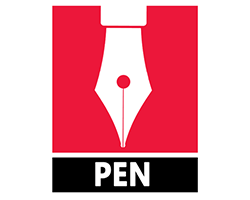- Ashourloo, D.,Matkan, A. A., Aghighi, H., Hosseni, A. & Gholampour, A. (2008). Irrigated and non-irrigated wheat classification based on cultivation calendar by HIS algorithm. Am. J. Agric. Biol. Sci. 3,602-609. [Google Scholar]
- Bamiro O. M., Afolabi M. & Daramola (2012). Enterprise combination of cassava based food crop farming system in Nigeria; evidence from Ogun State. Greener Journal of Agricultural Sciences 2(1), 13-20. [Google Scholar]
- Lowe, T. J., & Preckel, P. V. (2004). Decision technologies for agribusiness problems: A brief review of selected literature and a call for research. Manufacturing & Service Operations Management 6(3), 201-208. [Google Scholar]
- Ahmed M. A., Ahmed I. A. & Fawzi S. A. (2012). Optimization of the cropping pattern in Saudi Arabia using a mathematical programing sector Model. Journal of Agic Econ-czech 58(2), 56-60. [Google Scholar]
- Chowdhury M. A. & Chakrabarty D. (2015). Optimal crop yield under limited water availability: a linear programming approach. J. Basic and Applied Engineering Research 2(10), 892-895. [Google Scholar]
- Mellaku, M. T., Reynolds, T. W., & Woldeamanuel, T. (2018). Linear programing-based cropland allocation to enhance performance of smallholder crop production: a pilot study in Abaro Kebele. Ethiopia. Journal of Resources 7, 1-15. [Google Scholar]
- Angelo, A. F. (2013). Hybrid metaheuristics for crop rotation. Anais do Congresso de Matematica (CMAC)53-58 [Google Scholar]
- Ashutosh R. & Prakash S. (2018). Optimal allocation of agricultural land for crop planning in Hirakud canal command area using swarm intelligence techniques. ISH Journal of Hydraulic Engineering 1 -13. [Google Scholar]
- Ejieji C. N. & Akinsunmade A. E. (2020), Agricultural Model for Allocation of Crops Using Pollination Intelligence Method. Hindawi Journal of Applied Computational Intelligence and Soft Computing 4830359, 6 pages. [Google Scholar]
- Patel, N., Thaker, M., & Chaudhari, C. (2017). Agricultural land allocation to the major crops through linear programming model. International Journal of Science and Research (IJSR) 6(4), 519 - 522. [Google Scholar]
- Akinsunmade A. E. & Ejieji C. N. (2021). Land suitability and crop pattern model using integrated pollination intelligence algorithm and remote sensing. Earthline Journal of Mathematical Sciences 5(1), 1 - 15. [Google Scholar]
- Mirjalili S. (2015), Dragonfly Algorithm: A New Meta-heuristic Optimization Technique for Solving Single-Objective, Discrete, and Multi-objective Problems. Neural Comput. and Applic. 1-21. [Google Scholar]
- Yang X. S. (2012), Flower Pollination Algorithm for Global Optimization. J. unconventional computation and Natural Computation 7445, 240-249. [Google Scholar]
- McConnell, D. J. & Dillon, J. L. (1997). Farm management for Asia: a systems approach , FAO farms systems management series [Google Scholar]
- Charnes, A. & Cooper, W. W.(1959) Chance constrained programming. Management Science 6, 73-79. [Google Scholar]
- Sevruk, B. & Geiger, H. (1981). Selection of distribution types for extremes of precipitation. World Meteorological Organisation, Operational Hydrology Report, 15, WMO-No. 560, Geneva. [Google Scholar]
|

